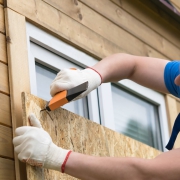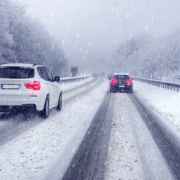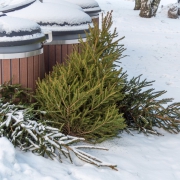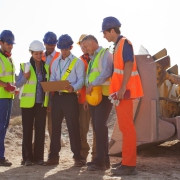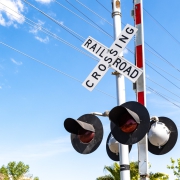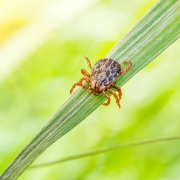Weathering Hurricane Season
There are few things more integral to the development of our society than the ocean. The United States marine economy made up nearly $500 billion of the national GDP in 2022, according to the National Oceanic and Atmospheric Administration. Its market growth is accelerating as the U.S. expands its import/export interests, and e-commerce makes spending money in the international B2C marketplace easier. With 71% of the Earth covered in water, the annual hurricane season is a habitual part of life for almost 40% of the world’s population who live within one 100 kilometers (62 miles) of a coastline.
Prioritizing Hurricane Preparation
As severe hurricanes become more frequent, many communities must prioritize hurricane preparation. Tropical storms not only affect a property’s trees and outside décor, but they can have serious implications for the stability of existing structures and the preservation of general topography.
A study led by the Department of Energy’s Pacific Northwest National Laboratory found that hurricanes have intensified “at a quickening pace” over the last half-century and that this intensification will continue to accelerate. Protecting properties from these storms will take careful planning and plenty of effort.
Shelter From the Tropical Storm
As you seek to protect your business during hurricane season, consider the following actions in your preparation:
- Remove all loose items from the property Flying debris, such as signs, stands and furniture, can be hazardous to any building or person nearby.
- Set up a sandbag perimeter If possible, make multiple layers and place them on top of one another like a brick wall.
- Shutter all windows and doors In some cases, traditional shutters and screens may not be enough; consider if you need to nail plywood to the frames, too.
- Prepare alternative power If flooding or downed power lines become a problem, you may need to turn off your power. Ensure you have access to sources of light and heat, such as flashlights and blankets.
As you assess your property’s readiness, be mindful of the state of your roof, fascia and storm drains. Buckling shingles, clogged drains and warped eaves can lead to severe structural damage and flooding.
A Watertight Plan for Hurricane Season
Each member of your staff should understand your business’s emergency plan during hurricane season. A good plan will include information on the following:
- Emergency contacts In a disaster situation, having the phone number of relief agencies, like a nearby church or your city’s Local Emergency Management Agency (EMA), could save lives.
- Easily accessible supplies If you’re preparing your business for a tropical storm, make sure each of your colleagues has a 72-hour kit in their office, including access to their medication. If you have access to a company car, it should also have a few reliable supplies on standby, like drinking water, food and resources to keep the vehicle running.
- Essential documents You may keep your company’s most important papers in a safe or a fireproof pouch. Make sure you take those with you in case you need to evacuate.
- An evacuation plan When a storm has shifted, and you have little time to prepare, evacuation might be the best option. A well-thought-out and written evacuation plan is essential to ensure team safety in this emergency scenario. The plan should include exit routes, safe areas and even a gathering place when possible.
Keeping Safe, Regardless of the Disaster
While hurricanes are most frequent in Florida, they can (and do) hit all along the U.S. Atlantic coastline, the Gulf coastline, Hawaii, Alaska, Puerto Rico and other islands. According to FEMA, “The deadly reach of a hurricane is not limited to storm-surge zones. An analysis of landfalling U.S. hurricanes through 2007 (excluding Hurricane Katrina) found that “about 80% of direct US hurricane fatalities since 1970 occurred outside of landfall counties, with most of these fatalities caused by inland flooding.”
Fortunately, EnviroServe is prepared for whatever natural event the future has in store and is on standby to assist you and your business with preparation, emergency response and remediation needs. EnviroServe emergency response teams are always ready to mobilize and perform emergency cleanups following hurricanes, floods, tornadoes, earthquakes and other natural disasters.
Now is the time to complete hurricane preparations. By solidifying your emergency plans and taking wise steps to batten down the hatches, you can ensure your business and community can better withstand the coming storms.
Contact EnviroServe to make sure you’re protected.
